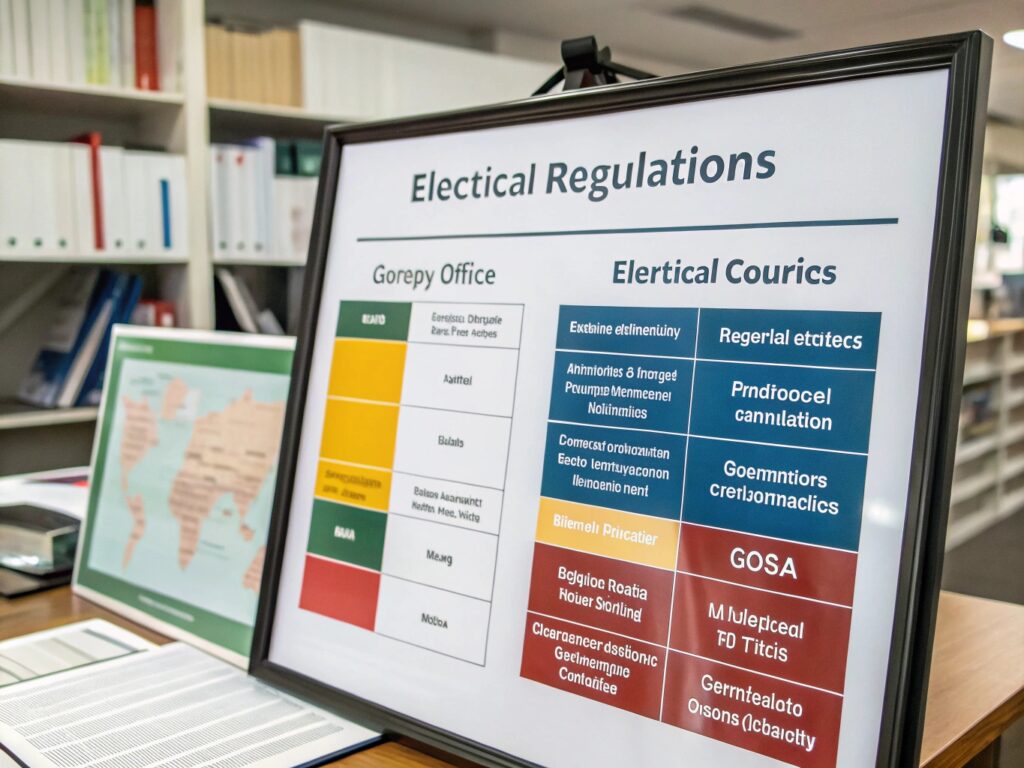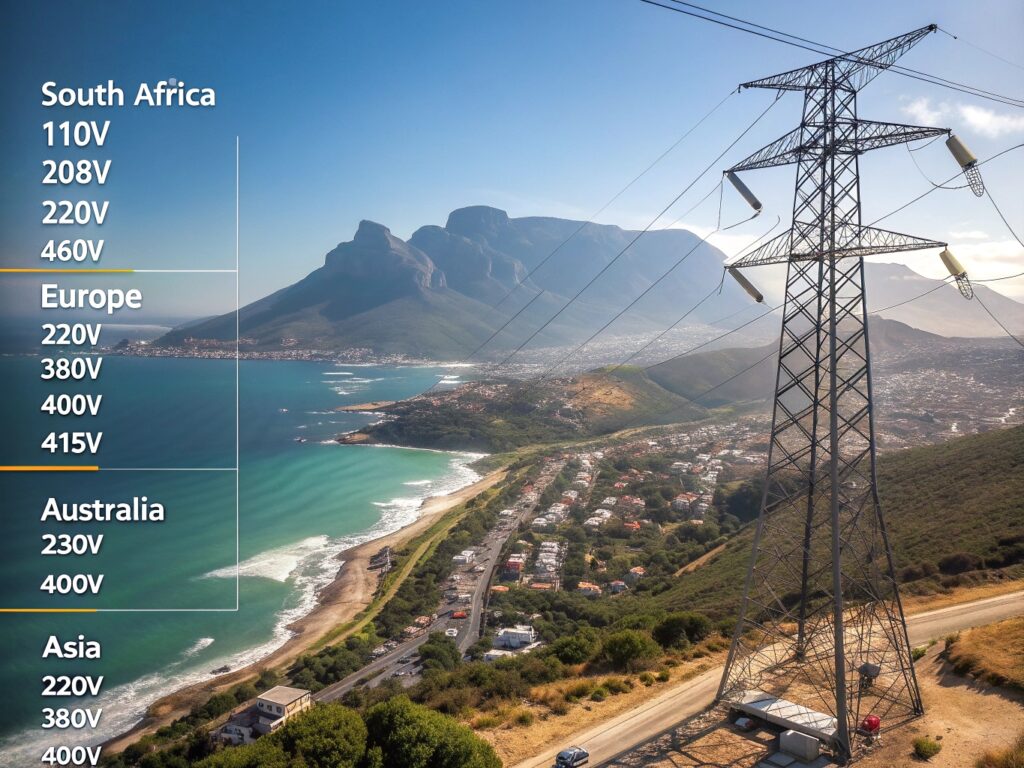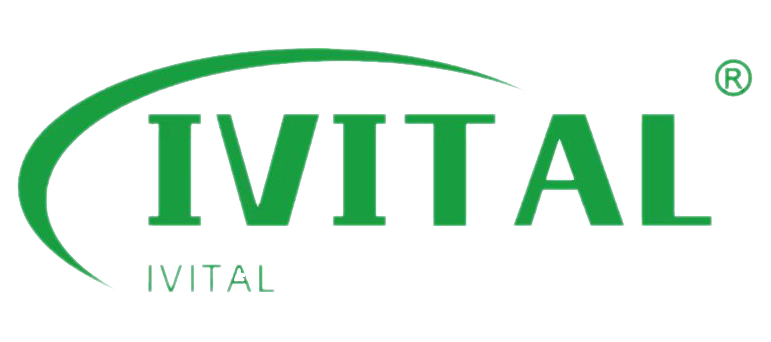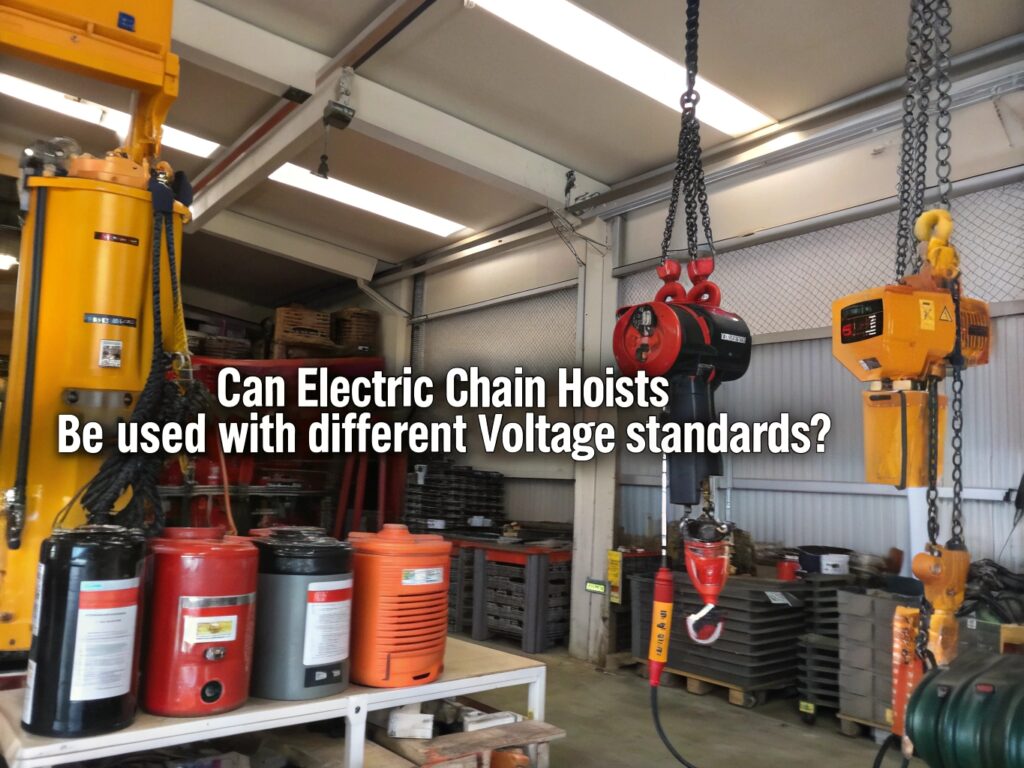
Buying an electric chain hoist for international use is not simple. Different countries use different voltage standards. A wrong choice could mean wasted money or even a safety risk.
Yes, electric chain hoists can work with different voltage standards, but compatibility depends on the hoist model and local electrical regulations. Some hoists support multiple voltages, while others may need transformers or converters.
I once ordered a hoist from Europe, only to find it incompatible with my local power supply. That mistake cost me time and money. If you’re buying internationally, you need to get the voltage right.
Table of Contents
- What Are the Common Voltage Standards for Electric Chain Hoists?
- How to Choose the Right Voltage for Your Electric Chain Hoist?
- Can You Convert an Electric Hoist to a Different Voltage?
- Are Chain Hoists Always Electrically Powered?
- Which is Better: Electric Chain Hoist or Electric Wire Rope Hoist?
- What Safety Features Should You Consider?
What Are the Common Voltage Standards for Electric Chain Hoists?
Voltage standards differ by country. Choosing the wrong voltage can make a hoist useless or even dangerous.
The most common electric hoist voltages are 110V, 220V, 380V, and 400V. Some countries use single-phase power, while others rely on three-phase systems.

Global Voltage Standards
Here’s a breakdown of voltage standards in different regions:
| Region | Common Voltages | Frequency | Phase Type |
|---|---|---|---|
| North America | 110V, 208V, 220V, 460V | 60Hz | Single & Three-Phase |
| Europe | 220V, 380V, 400V, 415V | 50Hz | Single & Three-Phase |
| Asia | 220V, 380V, 400V, 440V | 50/60Hz | Mostly Three-Phase |
| Australia | 230V, 400V | 50Hz | Single & Three-Phase |
How to Choose the Right Voltage for Your Electric Chain Hoist?
Choosing the wrong voltage could lead to a hoist that won’t work. Before buying, check your power supply.
Check your local voltage standard, choose a compatible hoist, and consider a transformer if needed.
Key Considerations
- Verify local electrical regulations.
- Decide between single-phase and three-phase power.
- Look for multi-voltage hoists that support different standards.
Can You Convert an Electric Hoist to a Different Voltage?
If a hoist doesn’t match your power supply, you might need a voltage converter.
Yes, you can convert some electric hoists using transformers, motor rewiring, or variable frequency drives.
Voltage Conversion Options
- Step-Up/Step-Down Transformers: Converts 110V to 220V or vice versa.
- Motor Rewinding: Some three-phase motors can be rewired for different voltages.
- Variable Frequency Drives (VFDs): Adjust voltage and frequency dynamically.
Are Chain Hoists Always Electrically Powered?
Not all chain hoists require electricity.
No, chain hoists can be manual, electric, or pneumatic, depending on the application.
Types of Chain Hoists
- Manual Chain Hoists: Operated by hand, ideal for light loads.
- Electric Chain Hoists: Common for industrial applications.
- Pneumatic Chain Hoists: Used in hazardous environments.
Which is Better: Electric Chain Hoist or Electric Wire Rope Hoist?
Choosing the right hoist depends on load capacity and lifting height.
Electric chain hoists are better for moderate lifting, while wire rope hoists handle heavier loads and higher lifts.
Comparison Table
| Feature | Electric Chain Hoist | Electric Wire Rope Hoist |
|---|---|---|
| Load Capacity | Up to 5 tons | 5-30+ tons |
| Lifting Height | Limited | High lifts possible |
| Maintenance | Lower | Higher |
What Safety Features Should You Consider?
Safety is a top priority when using electric hoists.
Important safety features include limit switches, overload protection, and emergency stop buttons.
Key Safety Features
- Limit Switches: Prevents over-travel.
- Overload Protection: Stops lifting beyond the capacity.
- Emergency Stop Button: Cuts power instantly.
Conclusion
Voltage compatibility is crucial for electric chain hoists. Choose wisely and check your local standards before buying.



